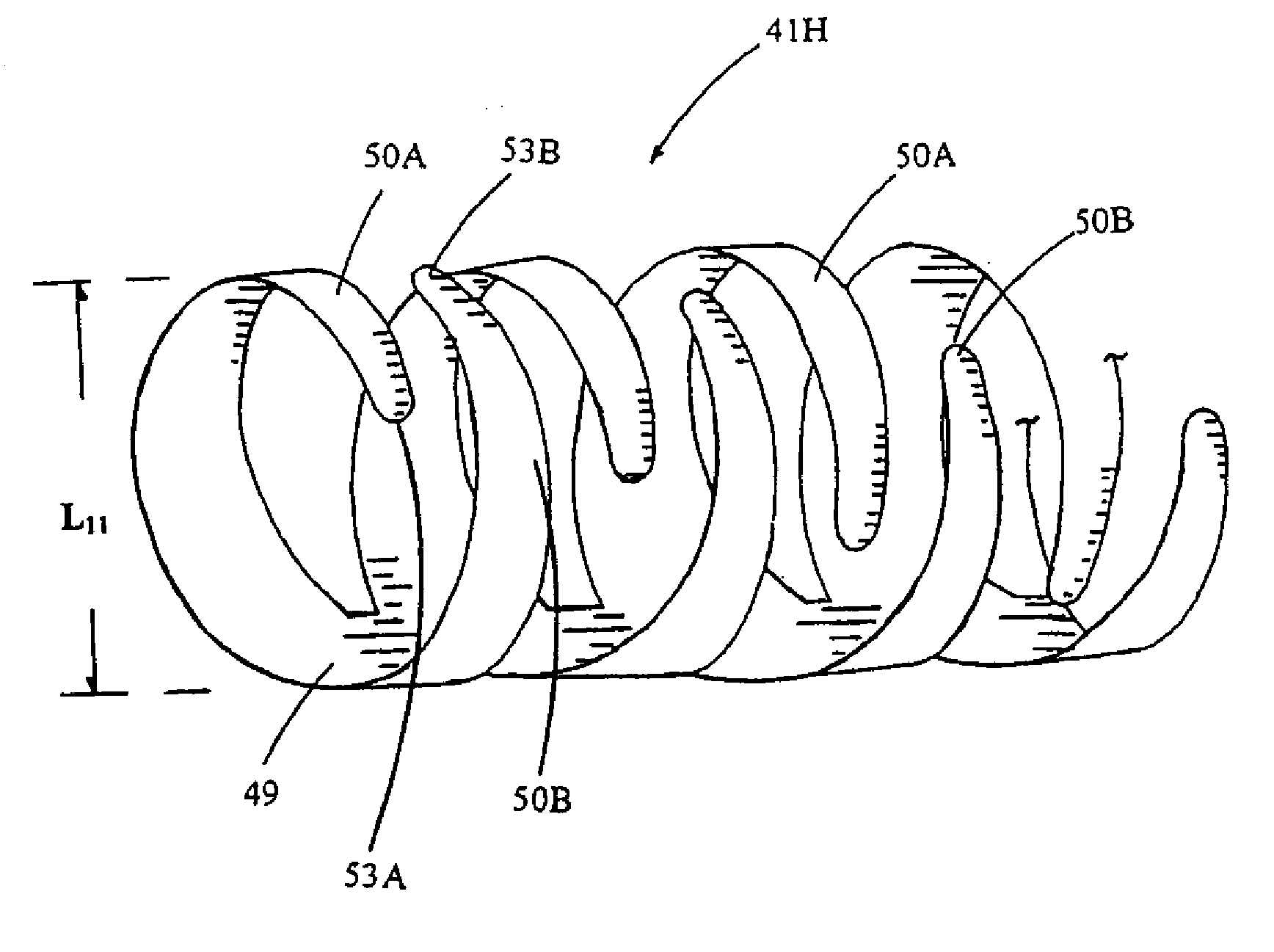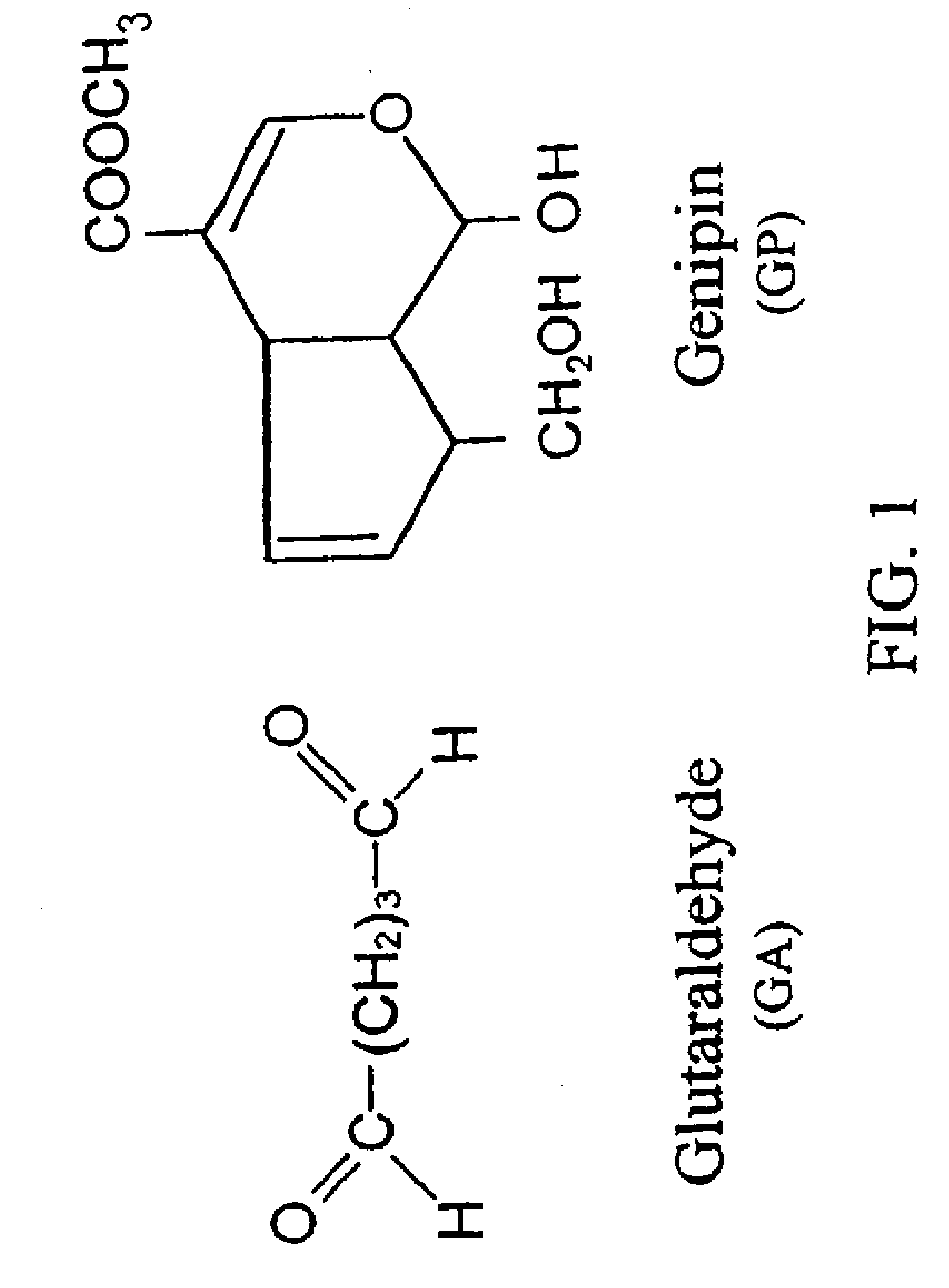Drug-eluting Biodegradable Stent and Delivery Means
a biodegradable stent and drug-eluting technology, which is applied in the direction of prosthesis, catheter, manufacturing tools, etc., can solve the problems of easy degradation of collagen by collagenase, low tensile strength, and impair the biocompatibility of biological tissu
- Summary
- Abstract
- Description
- Claims
- Application Information
AI Technical Summary
Benefits of technology
Problems solved by technology
Method used
Image
Examples
example # 1
EXAMPLE #1
[0219] Dissolve chitosan powder in acetic acid at about pH 4. Chitosan (MW: about 70,000) was purchased from Fluka Chemical Co. of Switzerland. The deacetylation degree of the chitosan used was approximately 85%. Subsequently, adjust the chitosan solution to approximately pH 5.5 (right before it becomes gelled) with NaOH. Add in drug(s) of interest into the chitosan solution. While loading the drug-containing chitosan onto a stent, adjust the environment to pH 7 with NaOH to solidify the chitosan onto the stent. In another embodiment, the drug-containing chitosan can be configured to become a stent or a multiple-layer stent by exposing to an environment of pH 7 to solidify the chitosan stent. The process can be accomplished via a continuous assembly line step by providing gradually increasing pH zones as the device passes by. It is further treated with a crosslinking agent, for example genipin to enhance the biodurability and biocompatibility. Note that the chemic...
example # 2
EXAMPLE #2
Low MW Chitosan
[0221] As shown in Example #1, chitosan powder is generally with a molecular weight (MW) of about 70,000 or higher (coded as regular or high MW chitosan) and is soluble in acetic acid at about pH 4. In operations, adjust the chitosan solution to approximately pH 5.5 (right before it becomes gelled) with NaOH for shaping, spray coating, or other prototype configuration. However, in a drug-eluting implant, certain bioactive agents, particularly the protein type substrates if added, may not survive the very low pH environment that is required to dissolve high MW chitosan. Therefore, it is one object of the present invention to provide certain type of low MW chitosan that is soluble in acetic acid at a pH higher than about 4, preferably between about 4 and 7, more preferably between about 5 and 7 and most preferably between about 6 and 7. Processes to obtain low MW chitosan and use thereof has been documented (Lin Y H et al., “Preparation of nanoparticles compo...
example # 3
EXAMPLE #3
Chitosan Stent
[0222] Dissolve chitosan powder in acetic acid at about pH 4 by dispersing 3 grams powder in 50 ml of water containing 0.5 wt % acetic acid. Chitosan (MW: about 70,000) was purchased from Fluka Chemical Co. (Buchs, Switzerland). The chitosan polymer solution was prepared by mechanical stirring at about 600 rpm for about 3 hours until all powder is dissolved. Subsequently, adjust the chitosan solution to approximately pH 5.5 (right before it becomes gelled) with NaOH. Add in at least one bioactive agent of interest into the chitosan solution. While loading the bioactive agent-containing chitosan onto a mold, adjust the environment to pH 7 with NaOH to solidify the chitosan to make a stent. In one example, the mold is a helically bendable hollow mold (such as the one made of silicone or polyurethane-silicone copolymer). During the solidification stage, the mold is promptly bent helically or spirally. After the chitosan is fully solidified, remove the mold to o...
PUM
| Property | Measurement | Unit |
|---|---|---|
| Shape | aaaaa | aaaaa |
| Biodegradability | aaaaa | aaaaa |
| Bioactive | aaaaa | aaaaa |
Abstract
Description
Claims
Application Information
 Login to View More
Login to View More - R&D
- Intellectual Property
- Life Sciences
- Materials
- Tech Scout
- Unparalleled Data Quality
- Higher Quality Content
- 60% Fewer Hallucinations
Browse by: Latest US Patents, China's latest patents, Technical Efficacy Thesaurus, Application Domain, Technology Topic, Popular Technical Reports.
© 2025 PatSnap. All rights reserved.Legal|Privacy policy|Modern Slavery Act Transparency Statement|Sitemap|About US| Contact US: help@patsnap.com



